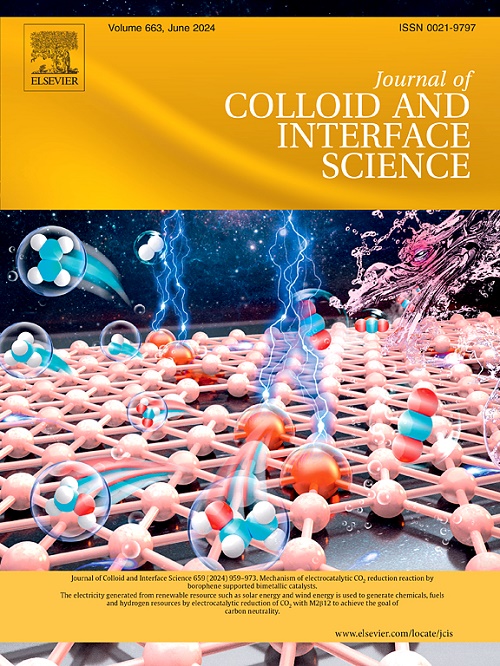Non-central symmetric 2D bismuth‐based perovskites for piezoelectric-enhanced sonodynamic immunotherapy
IF 9.4
1区 化学
Q1 CHEMISTRY, PHYSICAL
引用次数: 0
Abstract
Sonodynamic therapy (SDT), an emerging treatment modality, exhibits great potential in cancer therapy owing to its excellent tissue penetration, immune activation ability, and relatively low side effects. The lattice distortion of inorganic perovskite is challenging to control, which leads to an unsatisfactory SDT effect. This study presents a two-dimensional bismuth-based halide perovskite material, MA3Bi2Cl9-PEG (MBCP), with favorable piezoelectric properties, being first applied to tumor sonodynamic immunotherapy. By introducing methylamine cations, the central symmetry of MBC is effectively disrupted, resulting in a non-centrosymmetric crystal structure. This structural modification remarkably enhances the piezoelectric performance, enabling more robust charge separation effects under ultrasound excitation and thus facilitating the efficient generation of reactive oxygen species (ROS). Moreover, the generated ROS triggers immunogenic cell death in tumor cells, through the depletion of excessive glutathione and the inhibition of glutathione peroxidase 4, induces ferroptosis. The combined therapeutic strategy substantially enhances the anti-tumor efficacy and effectively suppresses lung metastasis. This research offers a promising example of the application of perovskite piezoelectric materials in sonodynamic immunotherapy.

求助全文
约1分钟内获得全文
求助全文
来源期刊
CiteScore
16.10
自引率
7.10%
发文量
2568
审稿时长
2 months
期刊介绍:
The Journal of Colloid and Interface Science publishes original research findings on the fundamental principles of colloid and interface science, as well as innovative applications in various fields. The criteria for publication include impact, quality, novelty, and originality.
Emphasis:
The journal emphasizes fundamental scientific innovation within the following categories:
A.Colloidal Materials and Nanomaterials
B.Soft Colloidal and Self-Assembly Systems
C.Adsorption, Catalysis, and Electrochemistry
D.Interfacial Processes, Capillarity, and Wetting
E.Biomaterials and Nanomedicine
F.Energy Conversion and Storage, and Environmental Technologies

 求助内容:
求助内容: 应助结果提醒方式:
应助结果提醒方式:


